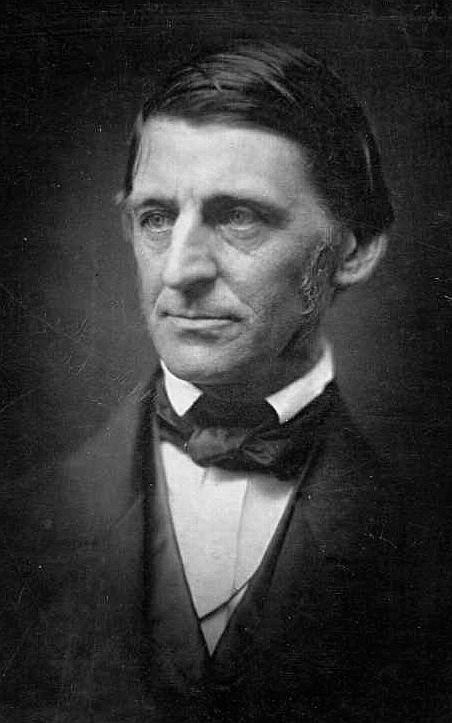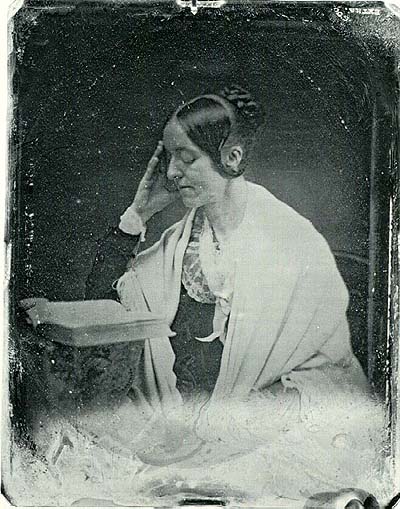German Idealism
German idealism is the name of a movement in German philosophy that began in the 1780s and lasted until the 1840s. The most famous representatives of this movement are Kant, Fichte, Schelling, and Hegel. While there are important differences between these figures, they all share a commitment to idealism. Kant’s transcendental idealism was a modest philosophical doctrine about the difference between appearances and things in themselves, which claimed that the objects of human cognition are appearances and not things in themselves. Fichte, Schelling, and Hegel radicalized this view, transforming Kant’s transcendental idealism into absolute idealism, which holds that things in themselves are a contradiction in terms, because a thing must be an object of our consciousness if it is to be an object at all.
German idealism is remarkable for its systematic treatment of all the major parts of philosophy, including logic, metaphysics and epistemology, moral and political philosophy, and aesthetics. All of the representatives of German idealism thought these parts of philosophy would find a place in a general system of philosophy. Kant thought this system could be derived from a small set of interdependent principles. Fichte, Schelling, and Hegel were, again, more radical. Inspired by Karl Leonhard Reinhold, they attempted to derive all the different parts of philosophy from a single, first principle. This first principle came to be known as the absolute, because the absolute, or unconditional, must precede all the principles which are conditioned by the difference between one principle and another.
Although German idealism is closely related to developments in the intellectual history of Germany in the eighteenth and nineteenth centuries, such as classicism and romanticism, it is also closely related to larger developments in the history of modern philosophy. Kant, Fichte, Schelling, and Hegel sought to overcome the division between rationalism and empiricism that had emerged during the early modern period. The way they characterized these tendencies has exerted a lasting influence on the historiography of modern philosophy. Although German idealism itself has been subject to periods of neglect in the last two hundred years, renewed interest in the contributions of the German idealism have made it an important resource for contemporary philosophy.
Romanticism in America
The Romantic movement, which originated in Germany but quickly spread to England, France, and beyond, reached America around the year 1820, some twenty years after William Wordsworth and Samuel Taylor Coleridge had revolutionized English poetry by publishing Lyrical Ballads. In America as in Europe, fresh new vision electrified artistic and intellectual circles. Yet there was an important difference: Romanticism in America coincided with the period of national expansion and the discovery of a distinctive American voice. The solidification of a national identity and the surging idealism and passion of Romanticism nurtured the masterpieces of “the American Renaissance.”
Romantic ideas centered around art as inspiration, the spiritual and aesthetic dimension of nature, and metaphors of organic growth. Art, rather than science, Romantics argued, could best express universal truth. The Romantics underscored the importance of expressive art for the individual and society. In his essay “The Poet” (1844), Ralph Waldo Emerson, perhaps the most influential writer of the Romantic era, asserts: “For all men live by truth, and stand in need of expression. In love, in art, in avarice, in politics, in labor, in games, we study to utter our painful secret. The man is only half himself, the other half is his expression.”
The development of the self became a major theme, self-awareness a primary method. If, according to Romantic theory, self and nature were one, self-awareness was not a selfish dead end but a mode of knowledge opening up the universe. If one’s self was one with all humanity, then the individual had a moral duty to reform social inequalities and relieve human suffering. The idea of “self”—which suggested selfishness to earlier generations—was redefined. New compound words with positive meanings emerged: “self-realization,” “self-expression,” “self-reliance.”
As the unique, subjective self became important, so did the realm of psychology. Exceptional artistic effects and techniques were developed to evoke heightened psychological states. The “sublime”—an effect of beauty in grandeur (for example, a view from a mountaintop)—produced feelings of awe, reverence, vastness, and a power beyond human comprehension….
Transcendentalism
The Transcendentalist movement was a reaction against 18th century rationalism and a manifestation of the general humanitarian trend of nineteenth century thought. The movement was based on a fundamental belief in the unity of the world and God. The soul of each individual was thought to be identical with the world—a microcosm of the world itself. The doctrine of self-reliance and individualism developed through the belief in the identification of the individual soul with God….
Ralph Waldo Emerson (1803–1882)

American writer Ralph Waldo Emerson in 1857
Ralph Waldo Emerson, the towering figure of his era, had a religious sense of mission. Although many accused him of subverting Christianity, he explained that, for him “to be a good minister, it was necessary to leave the church.” The address he delivered in 1838 at his alma mater, the Harvard Divinity School, made him unwelcome at Harvard for thirty years. In it, Emerson accused the church of acting “as if God were dead” and of emphasizing dogma while stifling the spirit.
Emerson’s philosophy has been called contradictory, and it is true that he consciously avoided building a logical intellectual system because such a rational system would have negated his Romantic belief in intuition and flexibility. In his essay “Self-Reliance,” Emerson remarks: “A foolish consistency is the hobgoblin of little minds.” Yet he is remarkably consistent in his call for the birth of American individualism inspired by nature. Most of his major ideas—the need for a new national vision, the use of personal experience, the notion of the cosmic Over-Soul, and the doctrine of compensation—are suggested in his first publication,
Nature (1836). This essay opens:
Emerson loved the aphoristic genius of the sixteenth-century French essayist Montaigne, and he once told Bronson Alcott that he wanted to write a book like Montaigne’s, “full of fun, poetry, business, divinity, philosophy, anecdotes, smut.” He complained that Alcott’s abstract style omitted “the light that shines on a man’s hat, in a child’s spoon….”
Henry David Thoreau (1817–1862)

Benjamin D. Maxham – Henry David Thoreau – Restored – greyscale – straightened.jpg
Henry David Thoreau, of French and Scottish descent, was born in Concord and made it his permanent home. From a poor family, like Emerson, he worked his way through Harvard. Throughout his life, he reduced his needs to the simplest level and managed to live on very little money, thus maintaining his independence. In essence, he made living his career. A nonconformist, he attempted to live his life at all times according to his rigorous principles. This attempt was the subject of many of his writings.
Thoreau’s masterpiece, Walden, or Life in the Woods (1854), is the result of two years, two months, and two days (from 1845 to 1847) he spent living in a cabin he built at Walden Pond on property owned by Emerson. In Walden, Thoreau consciously shapes this time into one year, and the book is carefully constructed so the seasons are subtly evoked in order. The book also is organized so that the simplest earthly concerns come first (in the section called “Economy,” he describes the expenses of building a cabin); by the ending, the book has progressed to meditations on the stars.
In Walden, Thoreau, a lover of travel books and the author of several, gives us an anti-travel book that paradoxically opens the inner frontier of self-discovery as no American book had up to this time. As deceptively modest as Thoreau’s ascetic life, it is no less than a guide to living the classical ideal of the good life. Both poetry and philosophy, this long poetic essay challenges the reader to examine his or her life and live it authentically. The building of the cabin, described in great detail, is a concrete metaphor for the careful building of a soul. In his journal for January 30, 1852, Thoreau explains his preference for living rooted in one place: “I am afraid to travel much or to famous places, lest it might completely dissipate the mind.”
Thoreau’s method of retreat and concentration resembles Asian meditation techniques. The resemblance is not accidental: like Emerson and Whitman, he was influenced by Hindu and Buddhist philosophy. His most treasured possession was his library of Asian classics, which he shared with Emerson. His eclectic style draws on Greek and Latin classics and is crystalline, punning, and as richly metaphorical as the English metaphysical writers of the late Renaissance.
In Walden, Thoreau not only tests the theories of Transcendentalism, he reenacts the collective American experience of the nineteenth century: living on the frontier. Thoreau felt that his contribution would be to renew a sense of the wilderness in language. His journal has an undated entry from 1851:
Walden inspired William Butler Yeats, a passionate Irish nationalist, to write “The Lake Isle of Innisfree,” while Thoreau’s essay “Civil Disobedience,” with its theory of passive resistance based on the moral necessity for the just individual to disobey unjust laws, was an inspiration for Mahatma Gandhi’s Indian independence movement and Martin Luther King’s struggle for black Americans’ civil rights in the twentieth century.
Thoreau is the most attractive of the Transcendentalists today because of his ecological consciousness, do-it-yourself independence, ethical commitment to abolitionism, and political theory of civil disobedience and peaceful resistance. His ideas are still fresh, and his incisive poetic style and habit of close observation are still modern.
Women and transcendentalism
Transcendentalism and reform
Candela Citations
- Transcendentalism. Provided by: Khan Acadamy. Located at: https://www.khanacademy.org/humanities/us-history/the-early-republic/culture-and-reform/a/transcendentalism. License: Public Domain: No Known Copyright
- German Idealism. Authored by: Colin McQuillan. Provided by: Internet Encyclopedia of Philosophy. Located at: https://www.iep.utm.edu/germidea/. License: Public Domain: No Known Copyright
- The Romantic Period, 1820-1860: Essayists and Poets. Provided by: Lumen Learning. Located at: https://courses.lumenlearning.com/americanlit1/chapter/reading-the-romantic-period-1820-1860-essayists-and-poets/. License: CC BY-SA: Attribution-ShareAlike

